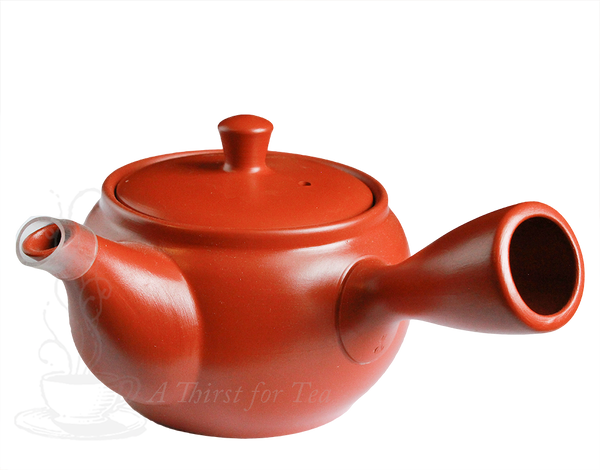The word kyusu means "teapot" in Japanese. Tokoname is the name of the largest, oldest and most notable of the six original kilns in the Aichi Prefecture of Japan dating back to the Heian Period (794-1185.) Whereas today most teapots in Japan are made from molds, Tokoname teapots are carefully hand crafted and are considered to be the best of their kind in Japan.
Size: 12oz.
Ceramic dimensions may vary slightly between units.
The clay used to make Tokoname Kyusu has a high iron content which is said to react with the tea resulting in a mellower, less bitter tea enhancing the umami character of the tea. With use over time the clay will develop a lustrous patina reflecting the individual character of the owner much like a Chinese Yixing clay teapot. Like Yixing clay, the clay used to make Tokoname kyusu helps to retain and maintain a consistent temperature while steeping.
Although the word kyusu simply means "teapot" in Japanese, in this country it has come to refer to the side-handled clay teapot made in the Tokoname region of Japan. The handle is located at a 90 degree angle to the spout which allows one to easily and gracefully pour with one hand. The thumb is used to keep the lid in place while pouring. This particular shape made it easier for the host to pour tea for the guests while sitting on a tatami mat.
Tokoname kyusu are self-filtering teapots that have built in strainers made of clay or a stainless steel mesh screen. This allows the tea leaves to float freely while steeping making it easier to pour the tea. The fineness of the screen can vary from pot to pot, so you want to make sure you chose one that will work best with the particular tea you wish to infuse. Some small particulate matter will always pour through giving the tea a silty, full flavored richness that is so very characteristic of Japanese teas.






